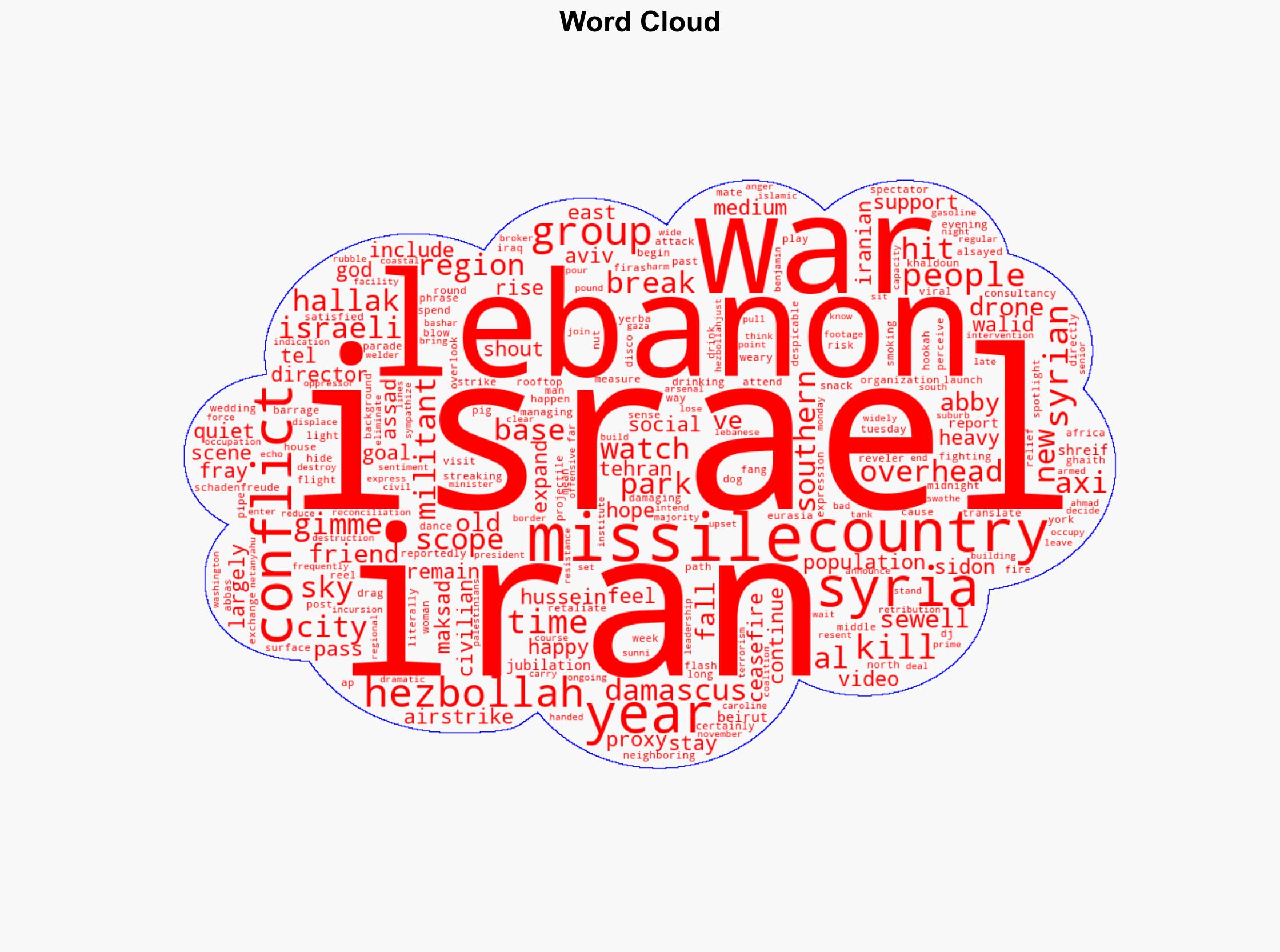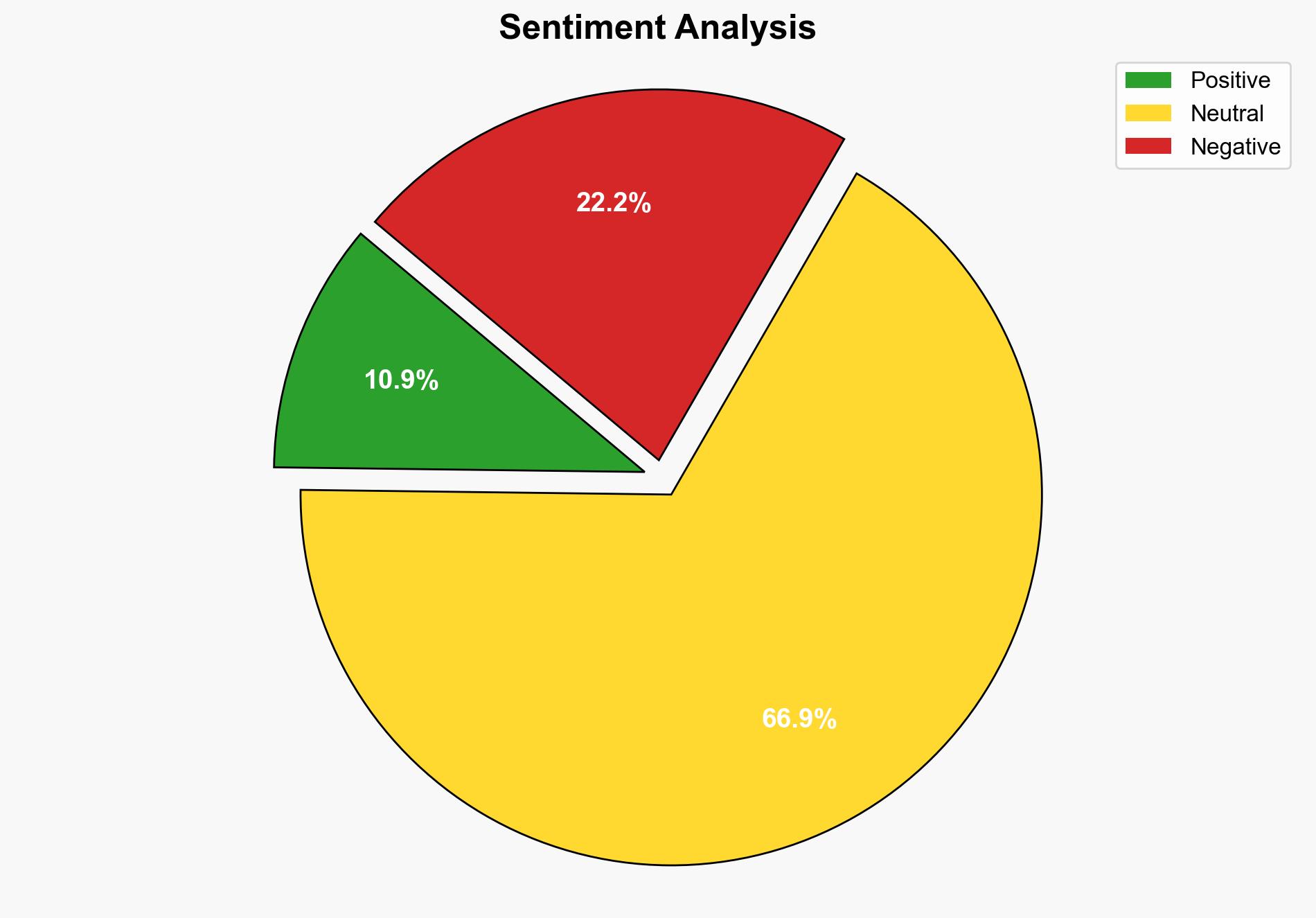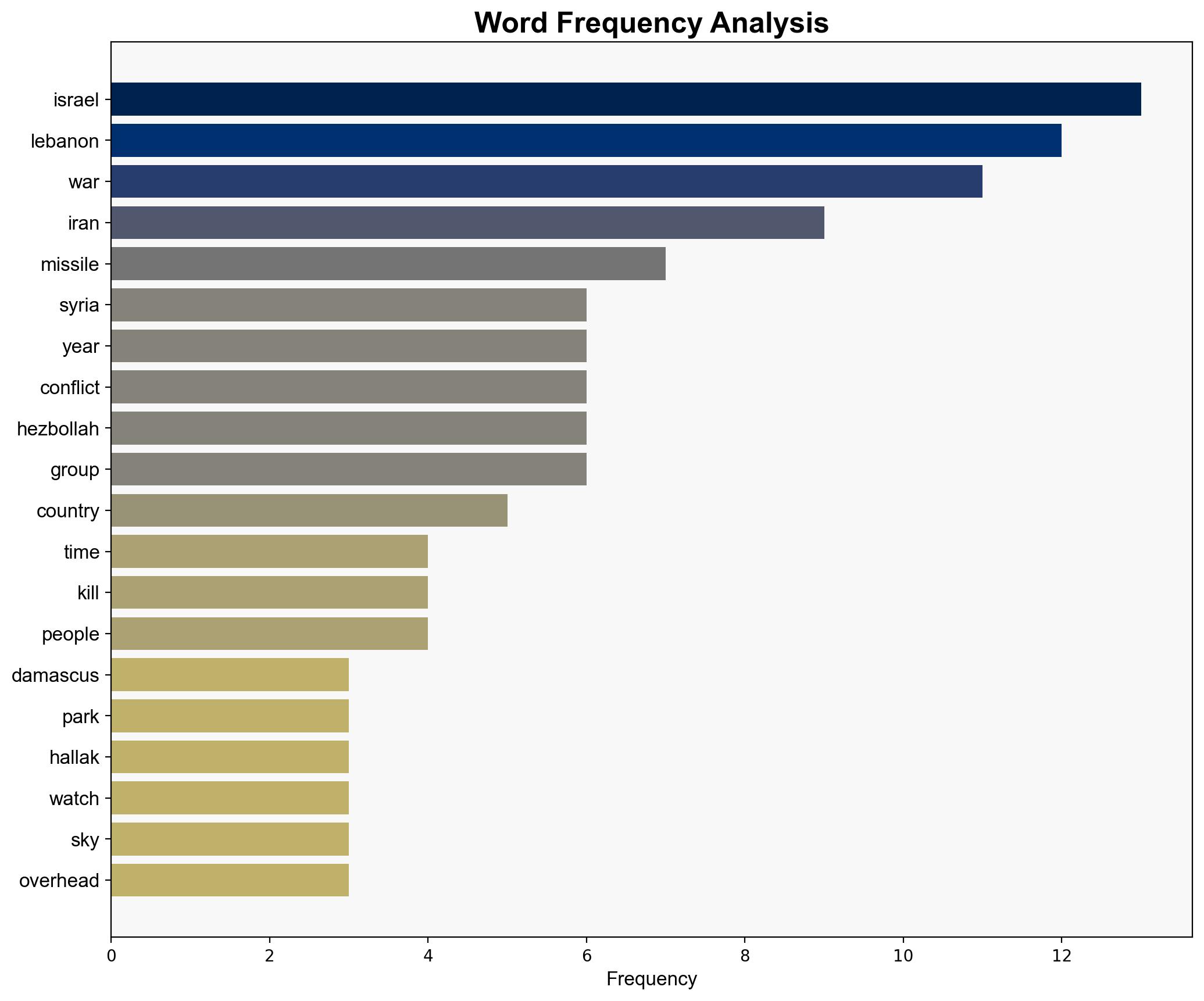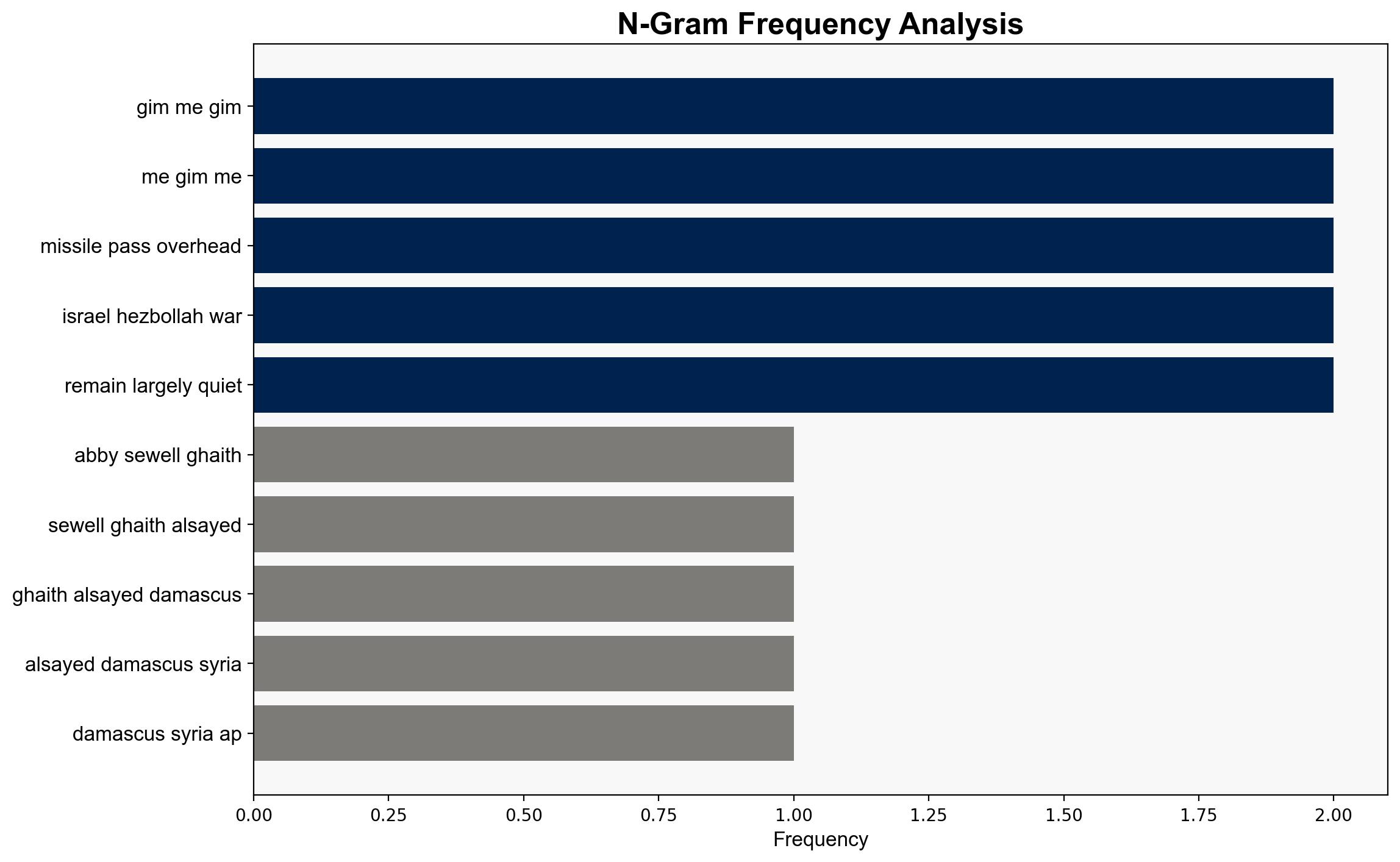War-weary Syrians and Lebanese watch from the sidelines as missiles fly in Israel-Iran conflict – Boston Herald
Published on: 2025-06-17
Intelligence Report: War-weary Syrians and Lebanese watch from the sidelines as missiles fly in Israel-Iran conflict – Boston Herald
1. BLUF (Bottom Line Up Front)
The ongoing conflict between Israel and Iran has intensified, with missile exchanges affecting neighboring countries such as Syria and Lebanon. Despite the regional instability, there is a noticeable reluctance among local populations to become directly involved. This report highlights the strategic implications of the conflict’s spillover and the potential for escalation involving regional actors like Hezbollah.
2. Detailed Analysis
The following structured analytic techniques have been applied to ensure methodological consistency:
ACH 2.0
Analysis suggests that both Israel and Iran are engaging in strategic posturing, with Israel aiming to weaken Iran’s regional influence and Iran seeking to demonstrate its retaliatory capabilities. The likelihood of direct involvement by other regional actors remains low, given current geopolitical calculations.
Indicators Development
Monitoring of social media and digital communications indicates a rise in anti-Iranian sentiment among Syrians, largely due to Iran’s involvement in Syria’s civil war. This sentiment could influence local support dynamics if the conflict escalates.
Narrative Pattern Analysis
There is a discernible narrative in Syrian and Lebanese media portraying the conflict as a distant struggle between two adversaries, with local populations expressing a desire to remain uninvolved. This narrative may serve to dissuade local actors from engaging in the conflict.
3. Implications and Strategic Risks
The conflict poses several strategic risks, including the potential for miscalculation leading to broader regional involvement. The presence of Iranian-backed groups in Lebanon and Syria increases the risk of proxy engagements. Additionally, economic instability in Lebanon could be exacerbated by further military actions.
4. Recommendations and Outlook
- Enhance diplomatic efforts to de-escalate tensions between Israel and Iran, leveraging international partnerships to mediate.
- Monitor Hezbollah’s activities closely for any signs of mobilization or increased military readiness.
- Scenario Projections:
- Best Case: Diplomatic interventions lead to a ceasefire, reducing regional tensions.
- Worst Case: Escalation draws in additional regional actors, leading to widespread conflict.
- Most Likely: Continued low-level exchanges with limited regional involvement.
5. Key Individuals and Entities
– Khaldoun Hallak
– Ahmad Al Hussein
– Firas Maksad
– Hussein Al Walid
– Caroline Rise
6. Thematic Tags
national security threats, cybersecurity, counter-terrorism, regional focus





